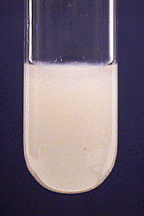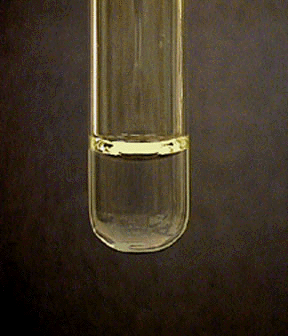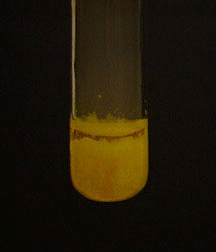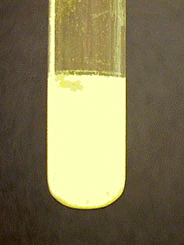
Cadmium, Cd2+
Most common oxidation state: +2
M.P. 321o
B.P. 767o
Density 8.65 g/cm3
Characteristics: Silvery, crystalline metal, resembling zinc. Moderately active. Cd2+ is colorless in solution and forms complex ions readily.
Characteristic reactions of Cd2+:
Aqueous Ammonia:
Aqueous ammonia reacts with cadmium ion to precipitate white cadmium hydroxide, which dissolves in excess ammonia:


Addition of 6 M NaOH to a solution of Cd(NH3)42+ precipitates a white basic salt of unknown formula. This salt is not soluble in ammonia.
Sodium Hydroxide:
Sodium hydroxide produces a precipitate of Cd(OH)2, but the precipitate does not dissolve in excess hydroxide:

Hydrogen Sulfide:
Hydrogen sulfide reacts with cadmium ion to precipitate yellow-orange cadmium sulfide from basic, neutral, or weakly acidic solutions:

Cadmium sulfide is soluble in hot dilute nitric acid:

Cadmium sulfide is also soluble in 3 M HCl and in hot, dilute H2SO4.
No Reaction:
Cl-, SO42-